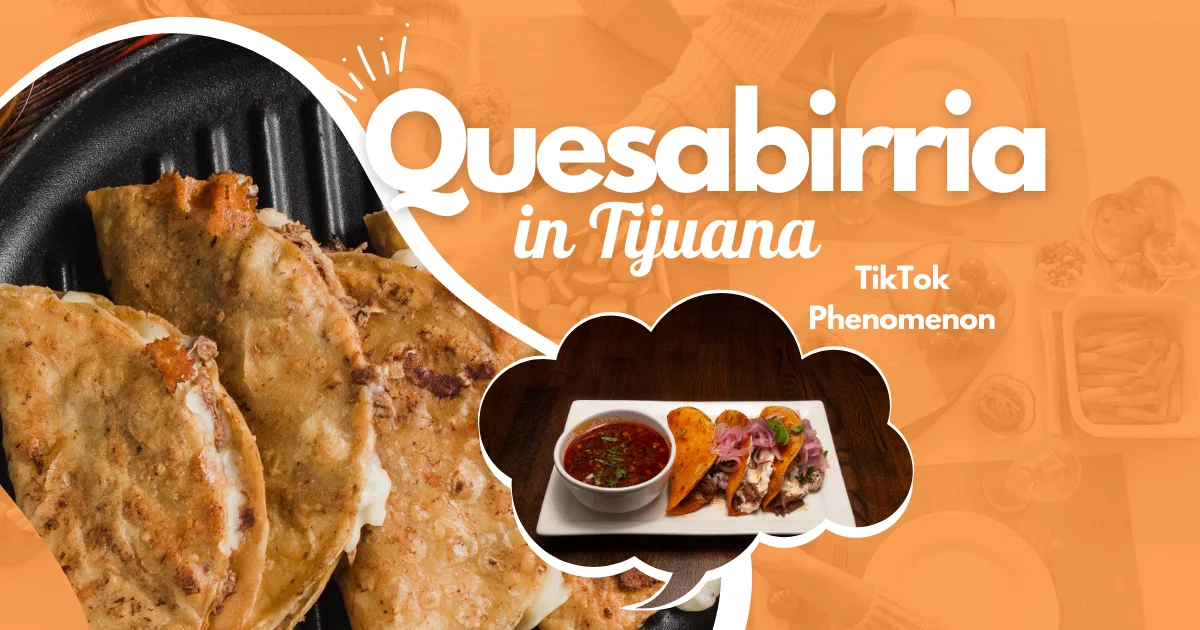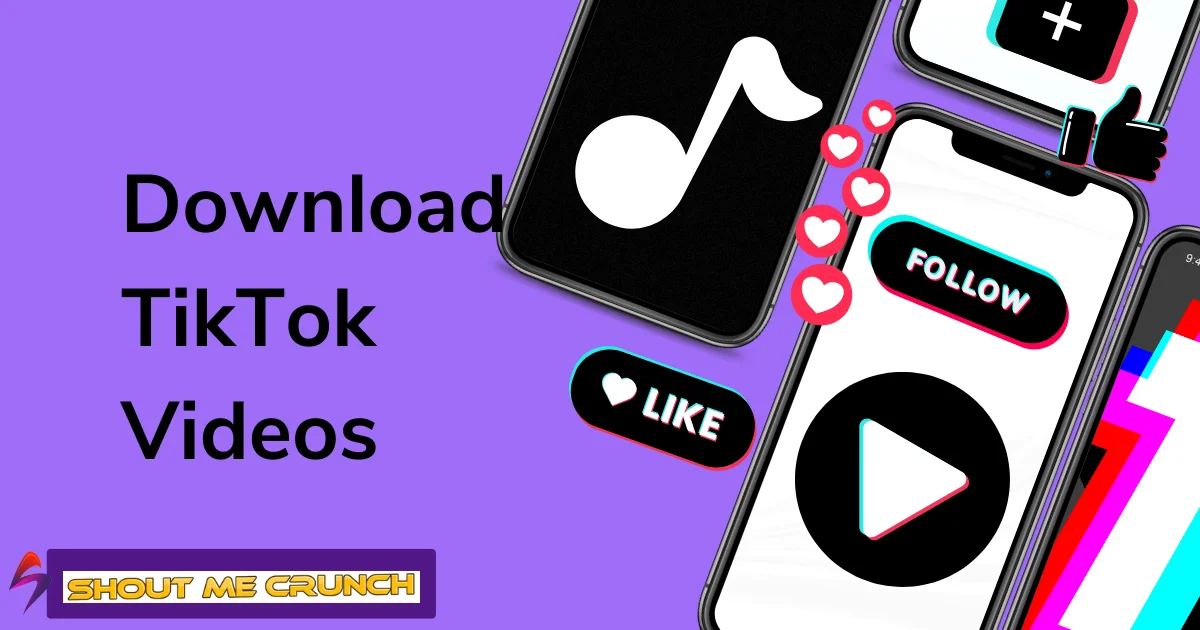If you’ve seen a slow-motion cheese pull followed by a red-stained tortilla falling into boiling consommé, you’ve witnessed quesabirria in its native habitat: your feed. This article explains how a simple mashup from a border town evolved from the menus of Tijuana Street vendors to those all over the world, thanks to TikTok. It also discusses what makes it so craveable, whether it can fit into a healthier diet, and why it holds cultural significance. By the end, you’ll know how the trend works and how one taco can convey a tale about food, identity, and the internet.
Contents
Why Quesabirria Took Over TikTok Food Culture?
Quesabirria is designed to go viral without even trying. The meat is so tender that it falls apart, and the Chile-laced fat makes the tortillas look scarlet. The consommé dip adds drama to the dish. On camera, everything is obvious, the sharp edges snap, the melted cheese stretches, and the cilantro-onion confetti explodes against the crimson tortilla. Not many dishes look as wonderful as they taste.
However, simply going viral isn’t enough to sustain a culinary craze. Quesabirria is also good at the table. It gives you spice, umami, crunch, and richness in one small bite. TikTok videos of Quesabirria tells it familiarities. It’s familiar enough to be comforting but different enough to feel new. That twin whammy of made-for-camera images and real-world payout is why the hash tagged clips turned into lines around the block.
Origins of Quesabirria in Tijuana
The main meal of quesabirria is birria, which comes from western Mexico. For cooking, goat, beef, or lamb meat fries slowly with dry chiles (guajillo, ancho, and pasilla), garlic, vinegar, and spices that resemble a brick-red adobo to make a braise. That’s why the flavor of meat becomes spicy, fragrant, and savory. It serves with their own cooking liquid consommé.
Along the border, especially in Tijuana, taqueros start to solve a real-world problem. They try to find a way to make food easy, even on the street. The solution was to cut the birria and cheese into pieces, put them into a tortilla, crisp them on a plancha, and then serve it, dipping them in consommé. That little change transformed a party stew into a ritual that you can do with your hands.
What Makes Quesabirria Unique?
Quesabirria is a system with layers. Traditionally, tortillas are made of corn, although some people like them with flour. They are brushed or quickly dipped in the fatty layer that builds on the consommé and then grilled. The fat contains the Chile pigments and scents that dissolve in fat, giving the dish its trademark red color and a crust that smells like toast.
The choice of cheese is essential. The Oaxaca and Chihuahua cheeses melt smoothly, holding the beef strands together and keeping the juices inside. Outside of Mexico, Monterey Jack has a common alternative, which is that it stretches easily. Its melted layer not only looks beautiful but also feels stable. It prevents the tortilla’s crunchiness from overpowering the juiciness of the meat. So, each bite has a delicious taste. A final dip in the hot consommé crisps the edges of the taco and fills it with seasoned broth. It acts like a built-in sauce that satisfies the taste buds of the next mouth.
How Viral Tacos Changed Food Trends?
Food loves to be shared, and quesabirria gave me a ready-made story: sizzle, flip, cheese pull, dunk, taste, and reaction. Short-form video sites made these loops even bigger, and those who created them, ranging from street sellers filming on their phones to professional food stylists, utilized close-up shots and ASMR music. The bright colors of the thumbnails (red tortilla, golden cheese, and green cilantro) made them impossible to refuse.
As clips moved from one platform to another, demand followed. People saved sites, tagged friends, and made plans for the weekend around the closest taqueria that served the dish they were craving. They prepare it at home using an easy recipe and then enjoy it with their friends. For operators, publishing the cook-through became as good as any ad buy, and guests were already sold on the experience when they arrived.
From Street Stalls to Global Menus
Food trucks immediately adopted and adapted the quesabirria format because it was easy to move around. Next came brick-and-mortar restaurants. Some stuck with the street manner, but others improved by using house-nixtamalized tortillas, prime beef cuts, and meticulously clarified broths. The fundamental parts stayed the same: meat, cheese, tortilla, consommé, and ritual.
Then the spin-offs happened. Birria ramen features springy noodles in the broth, birria pizza boasts meat and mozzarella on a crisp foundation, and sometimes Chile oil is drizzled on top. Birria fries utilize potatoes instead of tortillas, which transforms the consommé into a gravy-like consistency. Purists may argue, but the hybrids kept the conversation—and the lines—going by introducing the flavors to people who might not have tried the tacos initially.
Are Quesabirria Tacos Healthy?
Yes, it is a healthy food but only if you think about it. A traditional quesabirria taco typically contains a high amount of protein from slow-braised beef and is served with fresh onions, cilantro, and lime. The ingredient list is simple, and the food is made from scratch, not ultra-processed, which is a significant improvement over many fast-food options.
Three things make it indulgent: cheese, fat, and the amount of the serving. Dipping tortillas in rendered oil adds calories, cheese adds saturated fat and sodium, and two tacos, along with a lot of consommés, can provide you with enough energy for the whole day if you’re not careful. Changes that make things smarter keep the spirit alive: Remove any extra fat from the broth. Use a small amount of cheese that melts well. Choose a leaner cut, like chuck trimmed of hard fat. Instead of shallow-frying, griddle on a lightly oiled surface. To add volume without making the dish too heavy, serve with bright sides like cabbage slaw, nopales, or pickled onions. Quesabirria can fit into a balanced diet if consumed in moderation.
Why Quesabirria Captivated the Internet?
Choreography is what makes great food videos truly stand out. Quesabirria has different beats—brush, sizzle, flip, melt, fold, dunk, and drip—that editors can splice to music or let the plancha play the music. The drip following the dip is the best part: gravity slows the consommé down into a shine that makes people lean closer to the screen. That sensory clarity sets it apart from dishes that are broadly appealing because of their smell or texture.
There is also a story built in. Street footage keeps the taco in place and lends a crafty touch; handheld sampling shots add a personal touch. People feel like they’re in on a secret technique when they see it, and then they feel like they’re part of it when they find a local place or try the dish themselves—the dish honors both roles, which is why it continues to come back into feed without growing old.
The Cultural Impact: Authentic vs. Fusion Tacos
Quesabirria is an exciting mix of old and new. On the one hand, it pays tribute to the flavors and slow-cooking discipline of birria. On the other hand, it repackages them for portability, show, and cross-cuisine play. This paradox has led to a constructive debate: Where does respectful evolution stop and a gimmick start? Who profits when a local dish gets popular around the world?
One answer is ownership through visibility. When cooks and merchants convey the story—naming the areas, the chilies, and the methods—people learn to appreciate the craft, not just the show. Another response is access: the trend prompts more restaurants to make fresh masa, use authentic chiles to brace, and serve consommé that tastes like the essence of bones and time. In the best circumstances, the internet’s loudhailer protects legacy by making quality the main attraction.
Conclusion
It’s not simply another “thing you saw online.” It’s a case study in how craftsmanship and algorithms work together, how ideas that cross borders thrive in border cities, and how people can learn as they scroll through content. The trend is pushing us to make better tortillas, deeper broths, and be a little more patient at the stove.
If you follow the cheese pull, stay for the story: chiles that have been dried in the sun and then rehydrated, beef that has been cooked until the fibers give up, a vendor who learnt by watching, and a queue that forms when a camera catches the moment when a taco meets its soup. That’s the bit that will still be interesting long after the hashtag is over.








